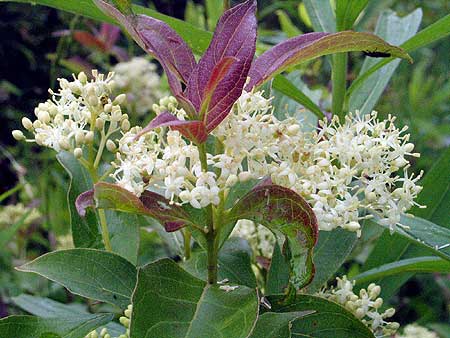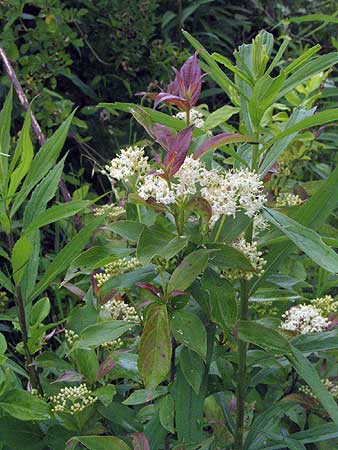Moist soil, typically in swamps and streamside forest and scrub, but also in open upland forest and thickets and bog-forest edges and disturbed sites; valley bottoms to mid-elevations.
The fleshy drupes are known to be tart and bitter, but were nevertheless eaten by many tribes. The fruits were gathered from August to October and eaten fresh, a few at a time, or, more commonly, pounded and mixed with other fruits such as choke cherries or saskatoons. Some people mashed them and dried them in cakes; others seldom stored them. The white drupes are believed to be less bitter than those tinged with blue.
The branches were used in making fish traps, spatulas, basket rims, and other items, and the larger limbs for frame poles. Old branches were used in smoking hides. The bark, like that of various true willows, was twisted into a type of rope used to lash fish traps, raised caches, and other structures.
 Red-Osier Dogwood
Red-Osier Dogwood